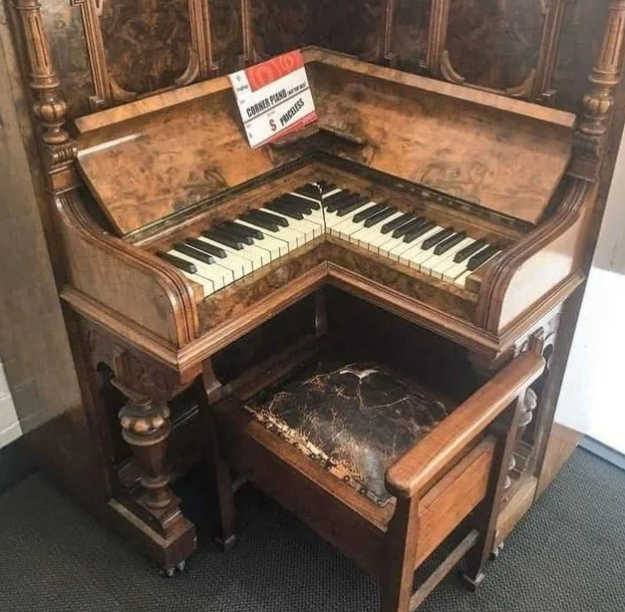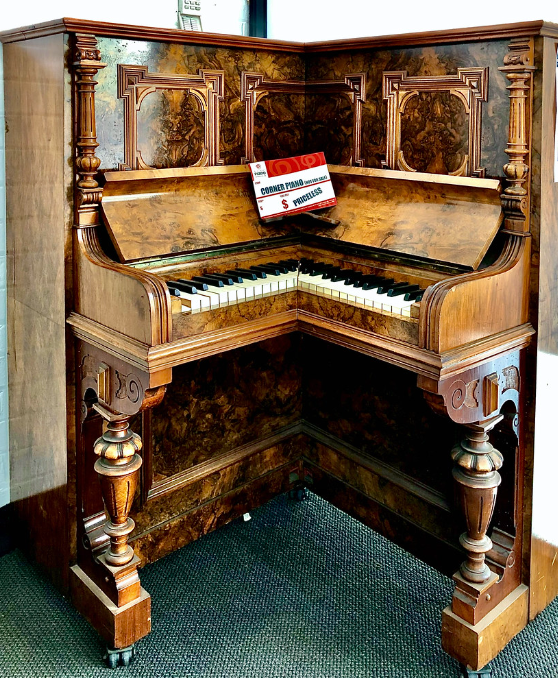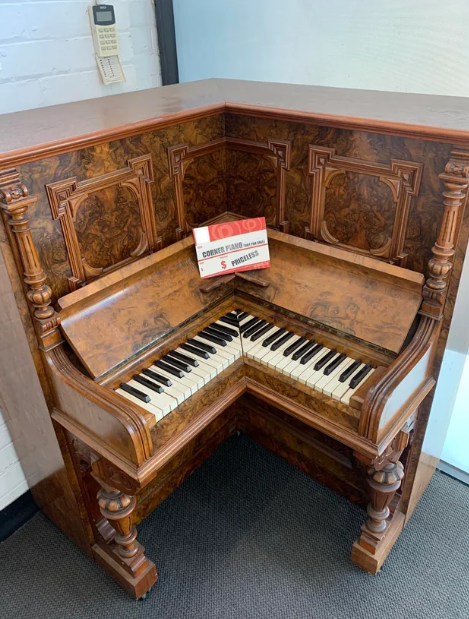The 150-year-old corner piano is more than just a musical instrument; it’s a piece of history that captures the artistry, craftsmanship, and cultural significance of its era. This rare and unique piano, with its intricate design and historical relevance, continues to captivate collectors, musicians, and historians alike. Let’s explore this antique piano with archeology.dulichvn.net
The Origins of the 150-Year-Old Corner Piano
1. A Brief History of the Piano
The piano, invented in the early 18th century, evolved over time to include various designs and styles. Corner pianos, in particular, were created to save space while maintaining the instrument’s rich sound.

2. The Era of Craftsmanship
During the mid-19th century, piano-making was at its peak, with artisans dedicating themselves to producing instruments that were not only functional but also visually stunning. The 150-year-old corner piano is a prime example of this dedication.
3. Cultural Significance of Pianos in the 19th Century
In the 1800s, pianos were a symbol of sophistication and cultural refinement. Owning a piano signified status and a commitment to the arts, making corner pianos a sought-after item in affluent households.
See more: The Triumphant Stele of Amenhotep III: A Window into Ancient Egyptian Power
Design and Features of the 150-Year-Old Corner Piano
1. Unique Shape and Structure
The corner piano is characterized by its triangular shape, designed to fit neatly into a corner while maximizing space in smaller rooms. This design also influenced its acoustic properties, offering a distinct sound.

2. Intricate Craftsmanship
This 150-year-old instrument boasts intricate carvings, elegant veneers, and ornamental inlays, showcasing the artistic talent of its makers. Each detail reflects the opulence of the period.
3. Materials Used in Construction
High-quality woods such as mahogany and rosewood were often used in crafting these pianos, ensuring durability and a timeless aesthetic. The keys, originally made of ivory, further enhance its historical value.
The Musical Legacy of the Corner Piano
1. A Sound Like No Other
The corner piano produces a unique tonal quality, with a warm and resonant sound that distinguishes it from modern upright or grand pianos.

2. Used in Intimate Performances
Due to their compact design, corner pianos were ideal for private performances and gatherings, fostering a closer connection between the musician and audience.
3. A Source of Inspiration
Musicians and composers have often drawn inspiration from instruments like the corner piano, finding its sound and history to be a wellspring of creativity.
See more: Fire Rainbows A Rare and Stunning Atmospheric Phenomenon
Preservation and Restoration
1. Challenges in Maintaining a 150-Year-Old Piano
Preserving a piano of this age requires meticulous care. Issues such as wood warping, key discoloration, and mechanical wear must be addressed delicately to maintain its integrity.

2. Restoration Techniques
Restoration experts use traditional methods and materials to repair and refurbish these pianos, ensuring they retain their historical authenticity while becoming playable again.
3. Modern Appreciation for Antique Pianos
Antique pianos like the 150-year-old corner piano are highly valued by collectors and museums, symbolizing a bygone era of musical excellence and craftsmanship.
The Corner Piano in Modern Times
1. A Collectible Masterpiece
For collectors, the 150-year-old corner piano represents a rare find. Its blend of historical significance and artistry makes it a prized possession.
2. Integration in Modern Interiors
Some owners choose to incorporate corner pianos into their home decor, appreciating their aesthetic value even if they are no longer used for performances.
3. Educational Value
These pianos are often displayed in museums and educational settings, providing insight into 19th-century music, culture, and craftsmanship.
Conclusion: The Timeless Allure of the Corner Piano
The 150-year-old corner piano is more than a relic of the past—it is a window into an era of artistic innovation and cultural refinement. Its unique design, rich history, and lasting legacy make it a cherished piece of musical history.

CÁC TIN KHÁC
Mark Twain & Olivia Langdon: A 36-Year Love Story Filled with Laughter and Devotion
The Tollund Man: A 2,400-Year-Old Mystery Preserved in a Danish Bog
Skara Brae: Scotland’s Hidden Neolithic Village
Porta Nigra: The Hidden Depths of Trier’s Iconic Roman Gate